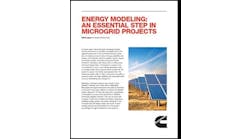Bringing middle America into the climate discussion requires focusing on the importance of resilience and job creation, said Gina McCarthy, President Joe Biden’s new climate advisor, speaking yesterday at a policy forum organized by the Energy Storage Association.
“Look, we have to get the middle of the country understanding and active on climate. We need to show them what resilience looks like,” she said.
McCarthy cited a US commitment to energy resilience technologies, particularly energy storage, as a way to ramp up clean tech manufacturing. “We are right now ceding a lot of the biggest opportunities to China and other countries.”
A longtime energy regulator and policymaker on both the state and federal level, McCarthy is the first national climate advisor to be named by a US president. She served as head of the Environmental Protection Agency under President Obama and is a former advisor to five Massachusetts governors, both Democrat and Republican. She is also a former commissioner at the Connecticut Public Utilities Regulatory Authority and, most recently, served as president and CEO of the Natural Resources Defense Council.
Speaking at the virtual forum, she called for moving the climate message from the “coastlines” to “every state in the middle so they can see, not just that climate change is real and the crisis is upon us, but we have solutions. Let’s celebrate them. Let’s spend money on them. Let’s grow this clean energy future that we all talk about, and let’s do it now.”
Feds as orchestra leader
Energy storage needs to be a central part of strategic thinking in grid planning, she said, noting that it’s not a futuristic technology. “We can deploy it now.” Energy storage, particularly batteries, are often incorporated in microgrids.
“Resilience is too often seen as a secondary consideration, when it really needs to move into a primary consideration,” she said.
McCarthy sees the federal government under Biden acting as “as orchestra leader for a very large band,” harnessing the power of federal spending to infuse investment in clean technologies. The US government is the nation’s largest energy user.
“… we have solutions. Let’s celebrate them. Let’s spend money on them. Let’s grow this clean energy future.” — Gina McCarthy
She cited three goals already set by the Biden administration:
- A carbon pollution-free power sector by 2035
- Net zero emissions by 2050
- Conversion of the federal transportation fleet to zero-emissions vehicles and the installation of 500,000 electric vehicle charging stations nationwide
“When you start from scratch, where you need to drive millions of jobs into the economy to get the United States on a more stable economic footing, you ought to be thinking about where you want to go, not where we used to be,” she said. “Let’s not re-create our fossil fuel based economy that we know is creating the climate crisis before us. Let’s start investing in clean energy.”
Track news about microgrids and energy storage. Subscribe to the free Microgrid Knowledge newsletter.






